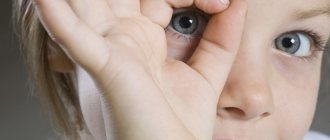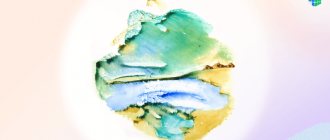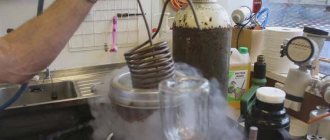Amazing teeth
How are teeth arranged and why are they needed? Teeth are the hardest parts of our body. Newborn children have no teeth. Only by the age of 2-3 years the child’s first 20 teeth grow. They are called milk teeth because after 6 years they are replaced by permanent ones: 16 on the upper jaw and 16 on the lower jaw. If a person loses a permanent tooth, a new one will never grow.
There are different types of teeth: canines, incisors, molars and all teeth perform their functions: incisors - bite off, cut food, molars chew, and canines help to gnaw solid food. Humans need teeth for biting, crushing and chewing food. Healthy teeth decorate the face, and we also use them when we pronounce many sounds (for example, “d”, “z”, “l”, “s”, “t”). Therefore, it is very important to take care of your teeth and treat them on time.
A tooth is a living organ that consists of three main parts - crown, neck, root. The crown is the part of the tooth that is visible in the mouth. The roots go into the gum and firmly anchor the tooth in the jaw. The neck is the part of the tooth that is located between the crown and the root. It is covered by the gum.
Any tooth is covered with a thin layer of enamel, which is the main protector of the tooth. Enamel is made of calcium. Beneath the enamel is dentin, a substance similar to bone but harder. Beneath the layer of enamel and dentin is the core of the tooth - the pulp - soft tissue that contains nerves and blood vessels. Thanks to nerves, the tooth senses heat and cold. Through blood vessels, oxygen, nutrients, and vitamins necessary for the growth and preservation of the tooth enter the tooth.
The part that we do not see is located in the gum and is called the root. It secures the teeth so that they do not become loose or fall out. A nerve passes through the root. The outside of the tooth root is covered with a special protective substance - cement. The base of the tooth is supported by the gum - a mucous membrane, a very dense and thick shell, equipped with blood vessels and nerves.
What causes diseases of teeth and gums?
Finding out the causes of diseases of teeth and gums, I studied the literature and learned a lot of useful information. It turns out that one of the most common causes of dental disease is poor oral hygiene . After eating, food remains on the surface of the tooth or between the teeth. It sticks to the gum, gradually turning into “dental plaque.”
Dental plaque is a sticky thin film located on the surface of the tooth and containing a huge amount of bacteria. This process occurs especially intensely when eating sweet, soft, sticky and viscous foods. Over time - 18-28 hours - the plaque becomes hard, bacteria multiply on it, and when sugar re-enters, acid is formed , which destroys tooth enamel. The acid destroys the enamel, penetrates the dentin and reaches the pulp. The nerve reacts to this, and the tooth begins to hurt. This is how caries begins.
The process of formation of hard plaque lasts on average 20 hours, so by removing plaque from the surface of the tooth 2 times a day - once every 12 hours, you can significantly reduce the likelihood of caries. Nowadays, you can take care of your oral cavity in different ways: using toothpaste and a brush, toothpick, dental floss, using rinses and chewing gum.
Experiment No. 1 “The effect of acid on tooth enamel”
Our teeth can also be damaged by mechanical damage to the enamel and temperature changes . Teeth are given to a person for chewing food, and not for opening bottles, cracking nuts, or biting objects not intended for food, such as pencils and pens. Many children from our class chew pens, pencils, and nails. All this leads to cracks in tooth enamel and can lead to caries. Teeth can also deteriorate if, for example, you drink cold juice, water, or eat ice cream immediately after a hot meal. The enamel cannot withstand such sudden temperature changes and cracks, leaving the tooth without protection.
Experiment No. 2 “Negative effects of temperature changes on teeth”
Progress of the experiment:
Plain water was poured into 2 glasses, citric acid was poured into one of the glasses and stirred with a spoon. We took 2 eggs, because the egg shell resembles tooth enamel, it is as hard as enamel. One egg was placed in water, and the other in water with citric acid. And they began to watch. The egg, which was placed in acid, immediately became covered with bubbles; after 2 hours the egg floated to the surface. The next day we saw that the acid had destroyed the shell.
Conclusion: the acid that forms in the mouth after eating food destroys tooth enamel.
Experience “How to brush your teeth ”
Goal: learn how to brush your teeth .
Materials: pieces of paper, toothbrush.
A little history about teeth
It turns out that since ancient times people have tried to take care of their teeth. One of the most ancient hygiene products are toothpicks. Archaeologists claim that Neanderthals used toothpicks. They used twigs, pointed sticks to remove pieces of remaining food from the surface of the tooth.
Even before our era, toothpicks began to be made of gold and silver. Few people could afford toothpicks made of precious metals, so they were made from feathers, ivory and wood. For example, in Mexico they were made from cactus thorns. In the 19th century, a long hunting knife was used as a toothpick in the Wild West, and cutlery was used in Europe. According to legend, in France, Cardinal Richelieu was so disgusted by his guests brushing their teeth with the tip of a knife that he ordered all knives to be dulled. Since then, table knives have had rounded tips.
The first “toothpastes” and toothbrushes appeared in Egypt. The brushes were made from tree branches with one fluffy end and the other pointed. In 1498, China came up with the idea of attaching a small number of Siberian boar bristles to a bamboo handle. The bristles were chosen the hardest and most durable - from the animal's backbone - and the teeth were cleaned without any paste or powder. Instead of toothpaste, our ancestors rinsed their teeth with salty sea water, which helped strengthen the gums, and also used charcoal, gypsum, cocoa grains, plant roots, resin, etc. to clean their teeth.
Under Peter I, it was customary to brush teeth with a cloth and a pinch of crushed chalk. In the villages, teeth were rubbed with birch charcoal, which whitened them perfectly. They refreshed the oral cavity by chewing mint leaves, cedar, larch, and fir needles, which have both a pleasant aroma and antibacterial properties. In 1937, nylon was invented and toothbrush bristles began to be made from it. This is how the toothbrush acquired its modern look.
The first tooth powder appeared in the 1850s and consisted of chalk, crushed medicinal herbs, fruits or flowers for a pleasant taste. The first toothpaste that cleans teeth from plaque appeared at the beginning of the 20th century, and the first Soviet toothpaste in a tube was released in 1950.
At that time, toothpaste was in short supply, and all Soviet people used toothpowder for a long time. Nowadays, there is a wide variety of toothpastes, which, according to their properties, are divided into children's, preventive, therapeutic, whitening, and pastes for sensitive teeth. But as it turns out, the secret to maintaining their health is hidden not only in proper dental care.
The second most common cause of disease and tooth loss can rightfully be considered poor nutrition. Have you ever paid attention to what we eat and how often we do it? Do we always brush our teeth after eating? It turns out that the habit of snacking something sweet between main meals and drinking sweet carbonated lemonades has a very bad effect on dental health.
These products promote the growth of bacteria and the formation of plaque, but bring little benefit to the body. In order for the enamel to be strong and the teeth to be healthy and shiny, you need to eat dairy products containing calcium, fish and vegetables and eat them regularly, without snacking between main meals.
Conclusion
During my research, my hypothesis found both confirmation and addition. As world experience shows, the main means of preventing dental diseases is careful personal oral hygiene and regular nutrition. To prevent teeth from decaying, they should be brushed and cared for at least twice a day, and done correctly. It is necessary to remove food debris that is trapped between the teeth. And a toothbrush helps us with this. Its bristles “sweep out” food debris, and toothpaste or tooth powder cleans the teeth and mouth of germs.
After this, the teeth become white, shiny, and smooth again. Each person should have their own personal toothbrush. Its bristles should not be very hard, so as not to damage the gums and scratch the mouth. The brush should be changed every 2-3 months and lubricated with soap after each cleaning. You should brush your teeth in the morning and evening for at least 3 minutes, brushing your teeth on all sides, and after each meal you should definitely rinse your mouth with a “mouthwash” or use chewing gum with xylitol.
You should visit the dentist at least 2 times a year for a preventive examination.
It is necessary to reduce the consumption of foods that contribute to the development of caries. Under no circumstances should you eat them before bed and forget to brush your teeth. There are foods that not only children love, but also “harmful” bacteria that form plaque and produce acid. These include sweets, foods that stick to your teeth (eg toffees, bananas, chips), carbonated drinks and especially energy drinks. But these are not the only foods that are dangerous for teeth.
There are foods that already contain acid and pose a danger to tooth enamel: fruit tea mixtures, lemon and black currants, sour apples, kiwi, pineapples. But this does not mean at all that these products cannot be eaten, you just need to at least rinse your mouth after eating them or chew chewing gum with xylitol for no longer than 5 minutes and, of course, do not open bottles, cans or bags of chips and milk with your teeth.
Ice, popcorn, candy, and nuts can all easily damage your teeth. In order to remove food debris from between the teeth, you need to use dental floss or wooden toothpicks, not pins or other iron objects.
Bibliography
- Children's Encyclopedia of Cyril and Methodius. The structure of my body. Teeth.
- Kupets T.V., Matelo S.K. //Children's dentistry. – 1998. – No. 1. – P. 31–34.
- Encyclopedia for children. Human. //Avanta - 2001. - Volume 18. - P. 131 - 134.
- Information portal “Pediatric Dentistry” - Healthy teeth for children.
- Large illustrated encyclopedia for schoolchildren. M. "Swallowtail" 2003
- Studenikin M. Good teeth are the key to health. Book about children's health. p.184-189
- Encyclopedia for children. T.2. Biology. M.: Avanta, 2004.
- Internet resources
Appendix 1. Questionnaire
1. Mom and dad went to work, you had breakfast, will you go brush your teeth?
- Of course not!
- Yes definitely!
- I don’t know, how are my teeth?
2. The doctor said that you need to brush your teeth twice a day every day, or have the tooth pulled out. What will you choose? It’s okay, I’ll tolerate it, it’s just one tooth!
- Of course, as the doctor said!
- And neither one nor the other
3. Now just answer, do you like brushing your teeth? No I do not like!
- Yes, I love it !
- Of course not ! You can't force it!
4. Do you like going to the dentist? No!
- Yes!
- If they promise ice cream later, I'll think about it.
5. What is more important to you? Should you drink a couple more bottles of Coca-Cola, or the health of your teeth?
- First without question
- Of course teeth!
Research work “Why you need to brush your teeth”
Content
Chapter I. _ Clean teeth are the key to health ……………………………………………1-2
Chapter 2. Research methods and results………………………………………….. 2-6
2.1. Practical work No. 1 “Sociological survey”………………………………………………………3
2.2. Practical work No. 2 “Sociological research”……………………… 4-5
2.3. Practical work No. 3 “Experiment to assess the quality of brushing teeth with
using special coloring solutions"……………………………………….6
Chapter 3. General conclusions on the work and recommendations……………………………………. 7
Literature…………………………………………………………………………………… 8
Applications
WHY DO YOU NEED TO BRUSH YOUR TEETH?
Avilkina Valeria Viktorovna
Russia, Tyumen region, Khanty-Mansi Autonomous Okrug - Yugra, Surgut district, Lyantor,
municipal budgetary educational institution
"Lyantor Secondary School No. 4", 4th grade
annotation
Our health largely depends on what and how we eat. This fully applies to dental health. But what is beneficial for the body as a whole is often harmful to the teeth. And it’s quite stupid to destroy your teeth while improving your health. To prevent this from happening, we need to know what and how is good for our teeth to eat.
Hypothesis: We assumed that a person is born with healthy teeth and they should remain so throughout his life.
The purpose of my work : to find out whether clean teeth is really the key to health; to form hygienic skills to prevent the occurrence and development of caries.
Tasks:
- Find out why teeth are needed and how they are arranged?
- What foods affect dental health?
- How do children feel about preserving their teeth?
Subject of research : human teeth
Research methods: theoretical (analysis of facts from literature, Internet sources); empirical (comparison, comparison, conducting a social survey); mathematical (statistical processing); research (an experiment to evaluate the quality of teeth cleaning using special coloring solutions).
Practical significance of the work : having examined the state of dental health and general care for them, we can confidently conclude that in order to prevent diseases of the oral cavity and teeth, observing a daily routine, normal sleep, proper and nutritious nutrition, hardening the body, and fulfilling certain hygienic requirements .
Chapter I. _ Clean teeth are the key to health
Our health largely depends on what and how we eat. This fully applies to dental health. But what is beneficial for the body as a whole is often harmful to the teeth. And it’s quite stupid to destroy your teeth while improving your health. To prevent this from happening, we need to know what and how is good for our teeth to eat. My dad works as a dentist, he recommends brushing your teeth at least twice a day after meals. From time to time, dad buys us a rinse with fluoride, which we use to rinse our mouths. “This is necessary to prevent caries,” he explains to us. Questions arise: what is caries and what needs to be done to prevent it?
An adult has 32 teeth, different in structure and function. Humans need teeth for biting, crushing and chewing food. Healthy teeth add a dazzling smile to your face, but we must not forget that teeth play an important role in the formation of speech sounds.
Teeth are the hardest parts of our body. [4] The top of the tooth is covered with enamel, a hard, smooth, shiny substance. Hidden under the enamel is dentin, the main substance that makes up the tooth. Even deeper, the pulp is a soft tissue rich in blood vessels and nerves. Nutrients and microelements enter the tooth through the vessels. [5-6] All teeth have roots. The base of the tooth is surrounded on all sides by gum.
Chapter 2. Research results
At all times, dazzling white teeth have been considered a sign of excellent health and beauty. From a medical point of view, oral hygiene is a huge aesthetic factor and an indicator of a person’s culture. We decided to conduct a sociological survey of children of the preschool educational institution “Smile” and find out how they maintain oral hygiene. (Appendix 1, video material). [7]
2.1 Practical work No. 1 “ Sociological survey of children of the preschool educational institution “Smile””
Equipment: video camera, book “Lessons of Aibolit”.
Progress:
15 preschoolers took part in the thematic survey. They were asked to answer several questions.
Research results:
Based on the survey results, we found out:
a) at this age children have already met with a dentist;
b) know the basics of oral care;
c) know the negative impact of sweets on teeth;
Conclusion: The survey results showed that preschoolers know about dental care, strive to maintain oral hygiene, and have an idea of foods that are good or bad for teeth.
2.2 Practical work No. 2 “Sociological research”
Equipment: questionnaires.
Progress of work: We conducted a survey among students in grades 8-11 of secondary school No. 4. A total of 40 questionnaires were distributed, of which 40 were returned.
The questionnaire contained questions aimed at determining the level of sanitary and hygienic knowledge and skills in the field of preventive dentistry, and the attitude of high school students to dental treatment.
Research results:
a) the study of interview data with schoolchildren made it possible to establish that knowledge and skills in oral care among high school students are at a fairly high level (Table 1) . Thus, among schoolchildren, 93.5% brushed their teeth regularly, and 6.5% brushed their teeth irregularly.
b) among adolescents who regularly cared for their oral cavity, 34.7% used one-time tooth brushing, 58.8% used two times. Moreover, 51.1% of schoolchildren brushed their teeth correctly, after breakfast and before bed.
c) the children used a toothbrush to brush their teeth. Almost all adolescents (93.0%) used toothpaste, only a few used toothpowder (0.3%).
d) the majority (81.0%) of high school students knew about additional methods of oral hygiene (flossing, using toothpicks and rinses), and 59.7% used them in practice. Chewing gum was used by 95% of schoolchildren, but only 41.0% of adolescents used it after meals. More than half of high school students used chewing gum “whenever they wanted.” [8]
e) high school students answered correctly about the culture of proper nutrition; they did not confuse foods and drinks that are healthy and harmful for teeth. However, most teenagers did not put their knowledge into practice and consumed easily digestible carbohydrates in excess quantities. Almost all schoolchildren (97.6%) consumed carbohydrate-containing foods (chips, cakes, muffins, etc.) and drinks (various colas and the like) between main meals, and believed that after this there was no need to rinse the mouth, brush teeth or use of chewing gum. Every second teenager (49.9%) reported that they add more than three tablespoons of sugar to their tea.
Since a balanced diet is a necessary condition for teeth to remain strong and healthy, I monitored nutrition in the school cafeteria for six months (Table 2).
My observations showed that the food in the school canteen is varied. But Table 2 shows that those containing the main sources of calcium - milk, dairy products, eggs, raw vegetables - are not given at all or rarely in the canteen.
f) studying the answers of high school students to questions regarding attitudes towards dental treatment revealed reliable data (Table 3) . 36.6% of high school students reported fear of visiting a dentist, and 63.4% reported no fear. 32.4% of schoolchildren expressed a negative attitude towards the dentist, while 67.6% expressed a positive attitude. [9]
Apparently, children's attitude towards dental treatment influenced the reason for visiting the dentist. Schoolchildren most often visited the doctor for preventive procedures (65.7%), less often for dental treatment (59.9%).
Conclusion: Thus, a comparative analysis of the data obtained showed that adolescents have fairly well-developed oral care skills: they regularly brush their teeth with a toothbrush and toothpaste, and correctly brush their teeth twice (after breakfast and before bed).
At the same time, adolescents have not retained the skills of proper nutrition and regular use of additional methods of oral care.
Schoolchildren were found to have a positive attitude towards the dentist, a lack of fear of dental treatment, and a preventative focus on visits to the doctor. A clinical dental examination of the oral cavity was carried out on a third of respondents.
No matter how hard our teeth are, they can decay. Normally, a large number of microbes live in the human mouth; some of them, when sugar enters the oral cavity, can form sticky substances that are fixed on the surface of the tooth (the so-called dental plaque). But over time - 18-28 hours - the plaque becomes hard, bacteria multiply on it, and when sugar re-enters, acid is formed, which destroys tooth enamel. [10] This is how tooth decay begins. [eleven] . So, the process of formation of hard plaque lasts on average 20 hours, so by removing plaque from the surface of the tooth 2 times a day - once every 12 hours, you can significantly reduce the likelihood of caries. [ 12 ]
It turns out that ancient people cared about oral hygiene. They used various sticks - toothpicks - to remove pieces of remaining food from the surface of the tooth. [13] Several thousand years ago, the inhabitants of Egypt used brushes made from tree branches with fluffy ends. [14] But the inventor of modern brushes is considered to be the Chinese emperor, who made the first toothbrush 500 years ago. [15] The bristles of Chinese toothbrushes were made from the scruff of the Siberian wild boar, and the handles were made from wood or animal bone. In 1937, nylon was invented and fibers began to be made from it. Our stores and pharmacies also have a very large assortment of toothpastes, flossing rinses and toothpicks. [ 16 ]
In order to identify the relationship between the appearance of soft plaque, which subsequently leads to caries, and the quality of teeth cleaning, we decided to conduct an experiment. The main condition of the experience was that I had to come with unclean teeth.
2.3 Practical work No. 3 “ Experiment to assess the quality of teeth cleaning using special coloring solutions ”
Equipment: dental chair, caries marker, toothbrush, toothpaste.
Progress:
First, I familiarized myself with the equipment of the dental office. [17] The dentist then examined my mouth. [18] Next, the doctor, using an applicator, applied a special dye, a caries marker, to my teeth, which he then washed off with water. [19-20] Areas of enamel covered with a soft coating remained colored. [21] This indicates a high risk of caries. The next step was to thoroughly rinse the mouth with the antiseptic chlorhexedine and re-evaluate the presence of soft plaque on the tooth enamel. [22] At the last stage of the experiment, I brushed my teeth using a toothbrush and paste. [23] After which the dentist again applied a caries marker to the enamel of my teeth, washed it off with water and assessed the result .[24-25]
Conclusion: A large amount of soft plaque accumulates on unbrushed teeth, which significantly increases the risk of developing caries; thoroughly rinsing the mouth with an antiseptic somewhat improves the situation, but does not completely remove plaque, and only conscientious brushing of the teeth for at least 3-4 minutes completely removes soft plaque from the teeth.
3. Conclusions:
1. A tooth is not a pebble, but a living organ, very important for a person.
2.Caries is the destruction of a tooth under the influence of various factors.
3. Already several thousand years ago, people began to brush their teeth.
4. Personal oral hygiene is the simplest and most accessible method of preventing dental diseases and a factor in the health of the entire body.
Chapter 3. Recommendations:
1. There are certain rules for dental care that allow you to avoid dental diseases.
2. After conducting research, I learned that most respondents know these rules, but do not always follow them.
3. I will always try to take proper care of my teeth, because I realized that this is very important.
“FORGET ABOUT LAZINESS - BRUSH YOUR TEETH TWICE A DAY”
Literature
- Avraamova O.G. The use of fluoride-containing toothpastes in the system of prevention of major dental diseases in children (planning and effectiveness). – Author's abstract. dis. ... doc. honey. Sci. – M., 2005. – 45 p.
- Children's Encyclopedia of Cyril and Methodius. The structure of my body. Teeth.
- Kuzmina E.M. Prevention of dental diseases. – M., 2001. – pp. 115-122.
- Kupets T.V., Matelo S.K. //Children's dentistry. – 1998. – No. 1. – P. 31–34.
- Leontyev V.K., Avramova O.G. //Dentistry for everyone. – 2000. – No. 1. – P. 14–16.
- Luneva N.A., Maslak E.E. //Pediatric dentistry. – 2002. – No. 3-4. – pp. 42-44.
- Encyclopedia for children. Human. //Avanta - 2001. - Volume 18. - P. 131 - 134.
- Information portal “Pediatric Dentistry” - Healthy teeth for children.
Annex 1.
Memo 1.
Some practical tips for oral care
- Each family member should have their own separate toothbrush.
- You need to brush your teeth in the morning after breakfast and in the evening before going to bed. After each meal you should rinse your mouth with water.
- After brushing your teeth, lather the brush and leave it like that in a clean glass until the next time you brush your teeth. Before brushing your teeth, the brush should be rinsed with tap water.
- Never use someone else's toothbrush!
- A toothbrush is a personal hygiene product.
- It is advisable to change your toothbrush every three months.
- Oral care products are divided into therapeutic, preventive and treatment-and-prophylactic. Your dentist will tell you which product you need. Therefore, it is necessary to visit the dental clinic at least once a year.
- You should brush your teeth from all surfaces for 1.5-3 minutes. The number of movements with a toothbrush is 150-300.
- In order to prevent diseases of the oral cavity and teeth, adherence to a daily routine, normal sleep, proper and nutritious nutrition, hardening of the body, and compliance with certain hygienic requirements are necessary and beneficial for the whole body.
Appendix 2
Memo 2.
DID YOU KNOW?
- The teeth are covered with enamel.
- It is hard and protects teeth from damage.
- If you don't care for your teeth properly, a hole (caries) appears.
- A hole in a tooth always hurts.
- Bad teeth also harm other organs - the heart, kidneys.
HARMFUL!
- Nibble nuts.
- Eating very cold or very hot food.
- Eating foods that are harmful to teeth (especially a lot of sweets).
WE RECOMMEND!
- Eat fruits and vegetables.
- DO NOT abuse sugar and sweets!
- Brush your teeth twice a day: after breakfast and before bed.
- Change your toothbrush every 3 months!
- Visit your dentist twice a year.
And you will have a dazzling smile!
Appendix 3
Table 1 - Results of a survey of high school students on oral care issues.
| Answer options | Response rate |
| % | |
| I brush my teeth: daily | 93,5 |
| 1 per day | 34,7 |
| 2 times a day | 58,8 |
| Sometimes | 6,5 |
| I don't read | 0,0 |
| Brushing your teeth: after breakfast and before bed | 51,1 |
| before breakfast and before bed | 7,7 |
| I use: toothbrush and toothpaste | 93,0 |
| toothbrush and tooth powder | 0,4 |
| I know about additional methods of oral hygiene (flossing, toothpick, mouthwash.) | 81,0 |
| I use flossing, toothpick, rinse aid | 59,8 |
| I use chewing gum: | 95,8 |
| after meal | 41,1 |
| whenever you want | 54,7 |
Appendix 4
Table 2 - List of products that help strengthen the structure of tooth enamel.
| Name product | often (once a week) | rarely (1-2 times a month) | they don't give it at all |
| Milk | + | ||
| Cottage cheese (casseroles) | + | ||
| Cheese | + | ||
| Porridge | + | ||
| Eggs | + | ||
| Vegetable salads | + |
Appendix 5
Table 3 - Attitudes and reasons for high school students’ visits to the dentist.
| Answer options | Response rate | |
| % | ||
| I am afraid of visiting the dentist | 36,6 | |
| No fear of visiting the dentist | 63,4 | |
| I hate the dentist | 32,4 | |
| I have a positive attitude towards the dentist | 67,6 | |
| Reason for visiting the dentist: dental treatment | 59,9 | |
| prevention | 65,7 | |









